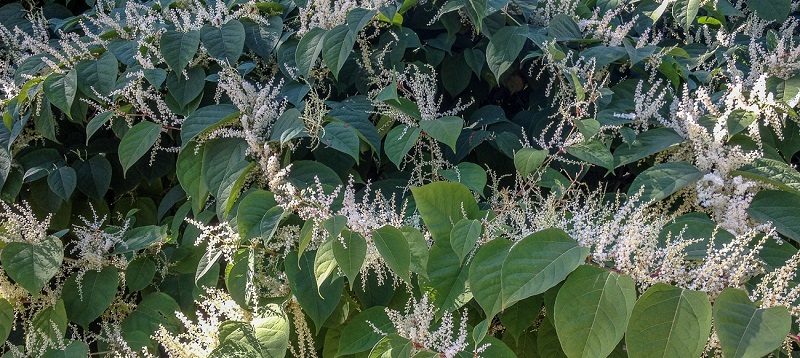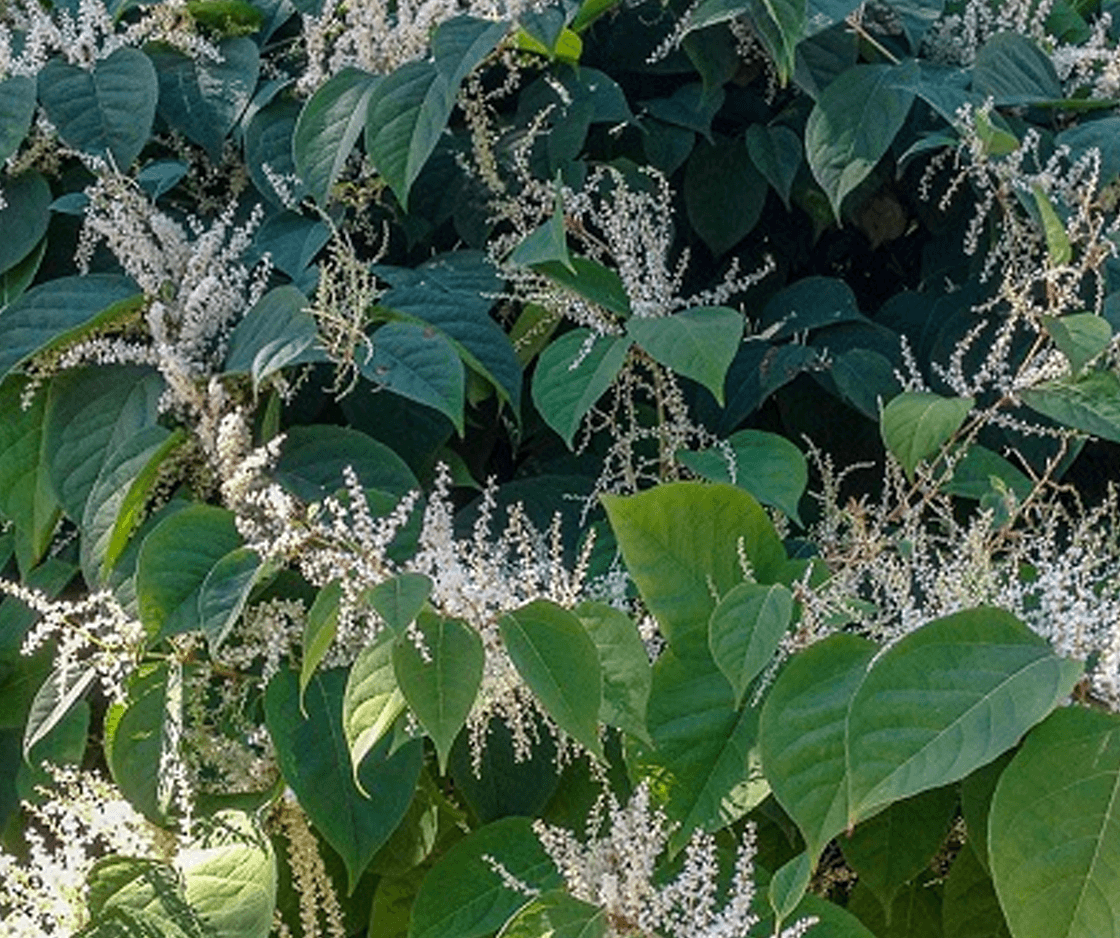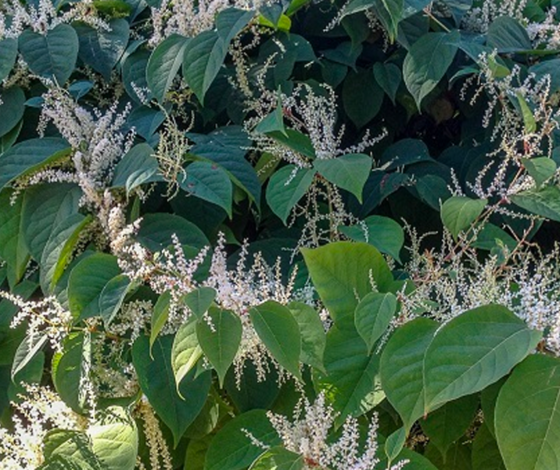
Japanese Knotweed originates in Japan and was brought to the UK in the 19th century by the Victorian plant hunters. At this time is was valued for its speed of growth and ornamental qualities. It spreads, colonises and invades everywhere it gets the slightest opportunity. The plant can regenerate and grow from cut or broken live stem pieces, from small fragments of rhizome, crown material and grows very quickly in the right conditions. A piece of rhizome roughly the size of your fingernail is capable of regenerating to form a new plant.
2022 EDITION
Visit our detailed Japanese Knotweed Removal Guide
Answers to all of your questions about this pesky plant!
CHECK IT OUT
Characteristics of Japanese Knotweed:
- Knotweed starts out as a reddish/purple shoot sprouting early spring time.
- Shoots grow quickly, up to 2cms a day forming a hollow stem.
- The raised nodes along the stem give it an appearance similar to bamboo.
- As the plant matures during the summer the stem becomes green with numerous small reddish/purple specks.
- Stems can commonly grow to 2-3m in height.
- The broad, heart/shield shaped leaves emerge in late spring and grow in a zig-zag formation along the branches.
- The off-white flowers bloom during the late summer months and grow in clusters of small spiky stems covered with tiny flowers.
- As knotweed reaches the end of its yearly lifecycle, the flowers and leaves drop and the stem dies turning to a dry brown cane.
- The rhizome below the crown has a woody, knotty appearance and is brown in colour.
- Snapping the rhizome reveals a yellow/orange inner core with a carrot like texture.
In the UK there are also Giant and Compact Knotweed varieties and a hybrid variety of giant and Japanese knotweed. Giant Knotweed can grow to a height of 5m and has larger leaves, the hybrid will share some of the characteristics of Giant Knotweed and some of Japanese Knotweed although this can vary a bit from plant to plant. The compact knotweed variety grows to only around 1m. In other characteristics such as leaf shape and colour and the appearance of stems these varieties very closely resemble Japanese Knotweed.
Options for removal include:
- Herbicides – Applied either by a sprayer, stem injection or weed wiper;
- Excavation and on-site treatment – Excavating but retaining the plant on-site allows the management of the plant within a wider development plan;
- On Site burial – Working in conjunction with herbicides or as a stand-alone option;
- Off-site disposal – Generally this is the quickest but most expensive option.
2021
Everything you wanted to know about Japanese Knotweed but were afraid to ask
Japanese Knotweed can be the stuff of nightmares for developers and homeowners alike. Not sure if you have a Knotweed problem? Looking for the answers? This free eBook will help educate, identify, treat and address the importance of eradicating Japanese Knotweed.
If you have any queries, need an experienced professional to identify a suspicious plant or you need some advice email to info@soilutions.co.uk or give us a call on 0131 538 8456. We’re always happy to have a chat.



